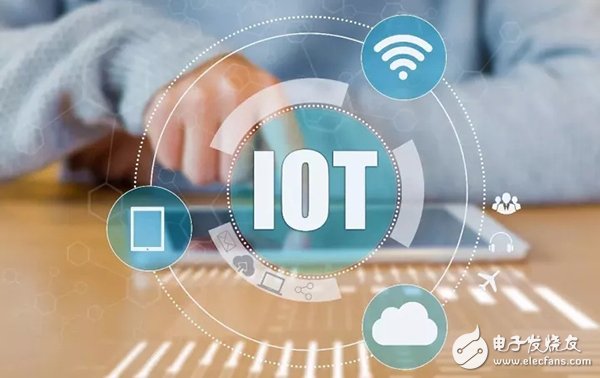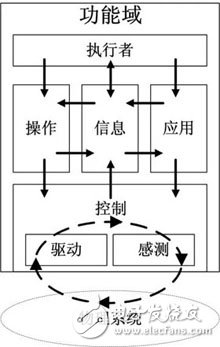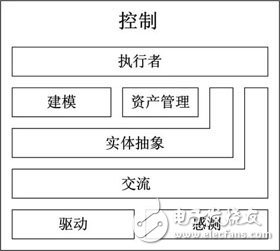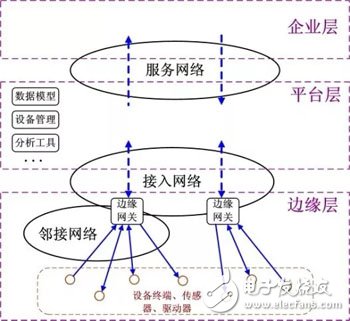Traditional industrial enterprises retain a large number of old information systems and industrial equipment. The information collection methods, communication modes, data formats and operating systems used in these systems and devices are often not uniform. The information technology they use at the bottom may be There are great differences. In Industry 4.0, the most critical task at present is to introduce CPS and connect various "heterogeneous" system devices to achieve mutual information compatibility. In the process of digitization, the construction of industrial Internet of Things needs to reduce the transformation of the original system and achieve backward compatibility (compatible with old systems).
Therefore, Industry 4.0 mainly implements “online†of old equipment and old systems by adopting “functional expansion†(increased CPS), focusing on three “integrations†(three types of integration: horizontal integration, vertical integration, end-to-end Integration), rather than refactoring the underlying information architecture of the industrial system (reconstructing protocol standards and opening interfaces).

From the perspective of the goal, Industrial Internet and Industry 4.0 are highly consistent, that is, through the networking of industrial systems to aggregate capabilities, and then flexible use, to serve personalized, creative needs, and to generate new business models and ecology.
In the Industrial Internet White Paper, the Industrial Internet is described as: Dedicated to the networking of industrial control systems to form large end-to-end systems. Industrial Internet systems can be connected to people and fully integrate internal systems, processes and analytical tools. Such end-to-end systems are referred to as "Industrial Internet Systems (IISs)."
The architecture of the industrial Internet begins with the appeal of commercial interests (the initiators of the alliance are large enterprises), conducts research on ecosystems based on various applications, and explains the system architecture in a simplified way, which is easy for organizations and individuals to understand. .
Unlike Industry 4.0, which focuses on “integration†and more on supply chain (value chain) research, Industrial Internet is more focused on stakeholder-“role†research. The “role†of the division of labor refers not only to the enterprises and organizations in the industry chain, but also to various professionals in the enterprise, including business decision makers, technical engineers, and product managers. In Industry 4.0, there is also a lot of content about the research and elaboration of "laborers (people)", but mainly from the sociology, human resources management science to conduct a holistic thinking.
First, the four-layer perspective of the Industrial Internet of ThingsStarting from the needs of "role", the Industrial Internet proposes a four-layer "Viewpoint" structure (also referred to as "components" in some articles).
1. Business Perspective (Business Viewpoint)
In the construction of the Industrial Internet, the business perspective focuses on identifying the business vision, values ​​and goals of stakeholders. Relevant people (including industry users) need to think about how to achieve business goals through the basic functions provided by the Industrial Internet. (Industry users: business decision makers, product managers, system engineers, etc.)
2. Application Viewpoint (Usage Viewpoint)
The application perspective is targeted at reliable, complex system applications (functions). Through a series of operations (use processes) by professional users or logical users, they can acquire the basic functions or services of the system and assemble them into mature commercial applications. (Professional users: system engineers, product managers, etc.; logical users: intelligent terminals)
3. Functional perspective (FuncTIonal Viewpoint)
The functional perspective focuses on the basic functional modules (components of the system) in the industrial Internet system to support the operation of the upper application components. The functional perspective mainly studies the relationship between modules, the combination structure, the information interaction interface, the usage process and steps, and the relationship between the function modules and the external environment of the system. (system and component architects, developers, integrators)
4. Implementation perspective (ImplementaTIon viewpoint)
The executive perspective focuses on information technology elements in the functional perspective, including specific industrial control systems, communication schemes, and software programs. The execution component (viewing angle) focuses on the most basic and core technical architecture of the industrial Internet of Things. The function (viewing angle) is built on the technical architecture of the execution perspective, enabling multiple applications (viewpoints) to work together and achieve complete delivery of the business. (System and component architects, developers and integrators, and system operators.)
Industrial Internet believes that industrial control systems (ICS) have been able to achieve industrial automation across industries. Through the perception of the physical world, they obtain the "incentive" of information, and through the "cure" and clear logic operations, issue command signals to the actuators, thereby changing the state of the physical world and the environment by the mechanical devices on the device. This "control" process is carefully designed by engineers to make all the actions of the automation equipment clear and fixed. However, if the production environment changes and the production products need to be upgraded, the engineer must redesign and adjust the system, which may require a “lean†project to start a production line. (Lean-Lean: A term used in manufacturing, which can be simply understood as: improving production systems and improving the energy efficiency of the production line).
To adapt to changes in the production environment and business needs, the signal processing components in the control system must first communicate with the external information system, and secondly, establish a common "language" (communication protocol, data specification), and be able to accept the upper layer. Application of deployment and command to achieve flexible “flexible production†and synergy with other commercial systems.
Among the four layers of perspective, the “execution perspective†is mainly the channel for constructing information flow (from the perspective of the communication industry, it is topology, interface, specification and message flow). Independent devices and systems in the "execution perspective" will output sensing signals or accept command signals according to the interface specification, forming a digital mapping in the "functional perspective", that is, obtaining an "identity" in the virtual world, which can be used by other information systems. Query, access, call, shut down, etc.
The systems and capabilities in the four perspectives are intertwined, but the perspectives are different. The business perspective and application perspective are more about the production activities from a business perspective. It is more concerned with capital, customer relations, supply chain, human resources, corporate assets, product life cycle, etc., from the above (demand) Look at the Industrial Internet of Things down (implementation). Functional components and execution components are production activities from the perspective of information technology and industry technology. They focus on how to allocate computing resources, how to deliver information, how to operate equipment, the maintenance and operation of systems, the robustness and security of technical architecture, A more in-depth and in-depth understanding of the industrial IoT system, focusing on its "organicity."
Second, the technical architecture of industrial Internet of ThingsAmong the four components of the Industrial Internet, both the functional perspective and the executive perspective disassemble the industrial Internet from a technical perspective. Among them, the functional perspective focuses on the industrial system as a whole, is the top-level technical architecture, defines and demonstrates the interrelationship of industrial core capabilities; the implementation perspective focuses on the information system structure, is the digital basis for supporting the functional perspective, and it is the information/network for the industrial Internet of Things. The capabilities are hierarchical.
In layman's terms, the executive perspective describes the "neural network" of a person (industry), while the functional perspective presents the "organ organization" of a person (industry). Through these two perspectives, Industrial Internet focuses on clarifying the relationship between information technology and industrial technology. For the time being, the architectural thinking of Industry 4.0 tends to improve and superimpose information technology. Relatively speaking, the Industrial Internet is more concerned with the reconstruction of industrial systems in the future, making information and industry deep and organic.
Functional perspective
The Industrial Internet Alliance hopes to have a clear, technical level functional structure, compatible with the traditional industrial technology structure of industrial automation, and suitable for most industrial information systems (such as ERP, etc.), on the other hand, can have good Scalability and robust systemicity can achieve full digital production and are suitable for related companies and personnel to understand, design, develop and operate. Therefore, the Industrial Internet has integrated the technologies in the industrial and information fields, and defined and divided the corresponding functional modules, and proposed the concept of “functional perspectiveâ€, which is the top-level functional architecture of the industrial Internet: functional domain model.
The functional domain model consists of five basic functional domains. An enterprise's information system can contain all or a few functional domains, or it can be a single functional domain. Each functional domain is a relatively independent and complete system. Of course, the actual business system will cut or modify some of the detailed techniques in the functional domain according to the application characteristics, but this will not affect the overall structure of the industrial Internet.

(1) Control domain
The control domain is deployed at the edge of the Internet of Things, close to the physical and environmental, and is at the edge of the Internet of Things. The control domain includes:
Sensing is the sensor's perception of equipment and environment;
Driving means that the mechanical components or circuit switches on the device perform the specified actions by transmitting command signals. In addition, injecting data into a storage device such as an electronic tag is also a type of driving.
Communication means that information is passed on the edge network.
Entity abstraction can be understood as the “digitization†of objects, that is, the physical (state or attribute) entity information is represented by unified, normative, and meaningful data (ie, digitized information), so that the upper layer system can interpret the sensing information and rewrite it. Device status (drive). Entity abstraction is a bridge between physical systems and information systems, and completes the mapping between virtual and reality. In the field of Internet of Things, the narrow definition of "digitalization" is "entity abstraction."
Modeling is a systematic description of the physical world (including the ability to analyze and predict a single thing). The object of modeling can be a production device (for example, by collecting a large amount of device state information to predict the hidden fault of the device), or an external environment (such as a machine table tennis player, judging the ball through the ping-pong track in the video). Falling point). The modeled data source comes from the underlying "entity abstraction." Complex modeling requires a combination of advanced industry technical knowledge and is achieved through advanced computing (artificial intelligence to etc).
The performer performs a series of operations (instructions to drive and sense) by interpreting the control objectives in accordance with their own control logic. The executor has autonomy, certain decision-making power and intelligence, and can complete tasks dynamically and flexibly. Of course, for some particularly important or simple control objectives, the performer will execute directly without logical judgment.

The entire control domain achieves the unification of (control) goals and (physical) behavior.
(2) Operation domain
The operational domain is a centralized operation of the control domain system. It can be remote from the control domain and implement remote supervision. The main responsibilities of the operational domain include:
Provision and deploy resources for the implementation of functions (components) and manage them accordingly.
In order to ensure the robustness of the function, the operational domain also needs the ability to monitor and diagnose the analysis: to analyze the system's key performance indicators to assess the health of the system, timely reporting or early warning for system failures, performance degradation and other issues.
In addition to the “reactive†operation mode (after the alarm is generated), the operation domain also needs to support prediction and optimization: predicting failures and system bottlenecks, handling before failures and problems occur (predictive maintenance); controlling various resources Utilization and underlying system equipment, by optimizing resource allocation to achieve production optimization (such as dynamically shutting down some of the machines running at no load to save power consumption in the plant)
In terms of predictive analytics, the operational domain needs the help of the information domain to make up for his lack of computing power.
(3) Information domain
Collect information from different domains and transform, model, and store these large amounts of heterogeneous information to achieve advanced analysis capabilities (analyze system bottlenecks or predict industry chain trends).
The data processing capabilities of the information domain include:
Collect (collect) massive amounts of data on sensors and operating conditions
Data quality management (data filtering, deduplication, picking up junk data)
(heterogeneous) data format conversion
Semantic processing (injecting remark information into raw data, associating other data sets, etc., such as location information, timing information, etc.)
Storage and data persistence (data persistence, mutual conversion of in-memory data model and storage model)
Data distribution processing (including stream analysis processing - streaming analyTIc processing)
The control domain also has the ability to collect and model data, but it is mainly used for real-time computing, real-time feedback, and continuous operations. Its focus is on the "physical behavior" of the device. The modeling of the information domain is mainly used for “post-calculationâ€, that is, through the big data analysis and intelligent prediction, a long-term optimization goal is formulated, and the overall performance of the system is improved by adjusting the execution strategy of the control domain.
The information domain has a "guidance" effect on the control domain. If the control domain is regarded as a "producer", the information domain is the "manager".
(4) Application domain
An application domain is a collection of all "funcTIon" (also called "functions") that contain the ability to operate on a "control domain." Features are represented in the application domain as relatively independent applications, and business is a systematic combination of multiple applications. Although there is a concept of "function (function)" in the underlying code of a software application, the "function" referred to by the application domain is a highly abstract (semantic) and complex logic program that can contain a set of coordinated physical operations or A series of streamlined data processing behaviors.
The operation request issued by the operation function is not unconditionally executed. It must accept the condition constraint of the control domain. For example, the operation instruction that violates the job security will be rejected by the control domain.
(5) Business domain
A business domain is a business system of various types of enterprises, such as enterprise resource management (ERP), customer relationship management (CRM), asset management system, human resource management system (such as a human resource sharing center), a project management system, and the like. These information services are a closed-loop business process through a complete set of software programs, also known as: "end-to-end" operational processes, such as the user to place an order to purchase goods from the client to the e-commerce platform (server) .
2. Executive perspective
As a top-level technical architecture, the functional perspective essentially looks at the technical architecture of the industrial Internet from the perspective of the industrial field as a whole, while the executive perspective looks at the industrial Internet from the perspective of “real implementationâ€. It is actually a fundamental part of the functional perspective, but According to the author, the essence of "implementation" is the mutual conversion of physical information and virtual information, so the functional topology demonstrated by the execution perspective looks more like a "network and computing method for serving information", which emphasizes the protocol. , interface, and informational mapping of system actions and device status. It is easy for people in the communication field to understand the architecture under the execution perspective and to correspond to the IoT network architecture.

(1) Three-tier architecture
The industrial Internet from the perspective of implementation is divided into three basic levels: the edge layer, the platform layer, and the enterprise layer, which correspond to different network and functional characteristics.
The edge layer collects various types of device data and aggregates them to the platform layer, or the platform layer sends data (such as operation instructions) in reverse to devices in the edge layer.
The platform layer, on the one hand, has management and monitoring functions for devices and assets, and can provide these capabilities to upper-level applications (enterprise layer). On the other hand, it can accept and execute operational instructions issued at the enterprise level: data analysis, information query or control device operation. The platform layer integrates various information capabilities in the industrial field and forms an open service system.
The enterprise layer is the industry application layer. It can be a business decision system, a device monitoring system for external users, or a software application for internal operations personnel for product quality analysis. It can get a lot of underlying production data from the platform layer, and can control a large number of devices through the platform layer, but it does not "care" about how these functions (query, manipulation) are implemented, it is only responsible for the logic implementation of high-level applications. .
(2) Layer 3 network
There are three layers of networks in the three-tier architecture mode: Proximity Network, Access Network, and Service Network.
Adjacent to the network, a certain number of forwarding nodes are connected to edge nodes (including sensors, drives, devices, assets, control systems, and edge services) in a certain area, and a local network is formed in the area. Adjacency networks can be understood as the edge network of the Internet of Things, but it emphasizes the scope of a scened space.
Access the network to connect assets, terminals, and devices to the platform layer. The access network can be an enterprise private network or a commercial carrier network, such as a 4G LTE network. All terminals need to connect to the service network through the gateway device.
Service network to achieve platform layer and enterprise layer connectivity. It can be the Internet, the mobile network of the operator, or the private network of the enterprise, or it can be a virtual private network built on various networks. In fact, the interconnection between enterprise systems can also be through the service network.
Conecting Terminals Without Screws
Conecting Terminals Without Screws,Cold Pressing Terminals,Low Pressure Cold Shrinkage Terminal,Cold Shrinkage Cable Terminals
Taixing Longyi Terminals Co.,Ltd. , https://www.longyicopperlugs.com